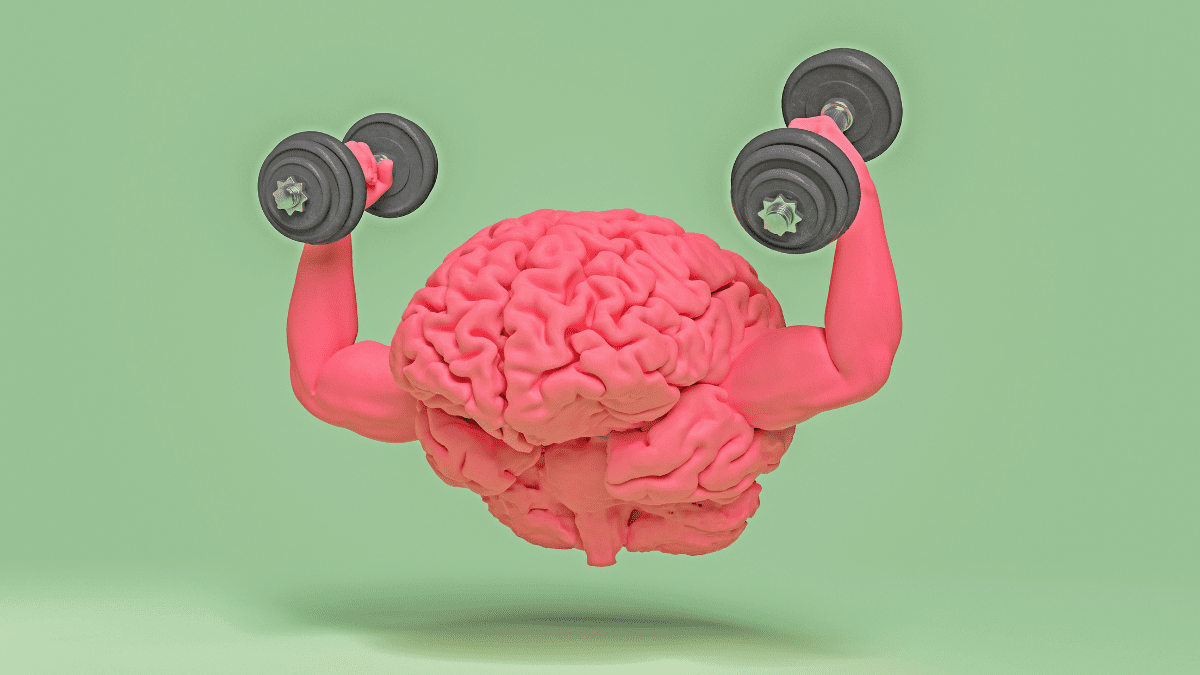Building Resilience: Stay Strong When Life Feels Unbearable
Building resilience is key to overcoming life’s challenges. Learn strategies to strengthen your mental health, manage stress, and develop inner strength to navigate difficult times with confidence.

Life doesn’t always go as planned. Challenges, setbacks, and unexpected hardships can leave us feeling overwhelmed, lost, and emotionally drained. But what if you could face life’s toughest moments with inner strength, clarity, and confidence? That’s the power of building resilience.
Resilience isn’t about avoiding difficulties—it’s about developing the mental and emotional strength to navigate them. Studies show that resilient people experience lower stress, improved mental health, and a greater sense of control over their lives. The good news? Resilience isn’t something you’re born with—it’s a skill you can develop.
In this guide, you’ll learn science-backed strategies to strengthen your resilience, overcome stress, and build the mindset needed to thrive, even in the face of adversity. Whether you’re struggling with personal challenges, career setbacks, or emotional burnout, these tools will help you regain control and move forward with confidence.
Let’s dive into the foundations of resilience and how you can start building a stronger, more unshakable mindset today.
Building Resilience: Why It Matters for Mental Strength
Resilience is the ability to adapt, recover, and grow stronger in the face of challenges. It doesn’t mean avoiding hardships—it means learning to navigate them without being completely overwhelmed.
Some people seem to bounce back quickly from difficulties, while others struggle to regain balance. But building resilience is not just a personality trait—it’s a skill that can be developed through intentional habits and mindset shifts.
Why Building Resilience Matters for Mental Health
Resilience is essential for maintaining emotional well-being, managing stress, and preventing burnout. Research shows that resilient individuals tend to:
- Experience lower levels of anxiety and depression.
- Cope with stress more effectively.
- Have better emotional regulation and problem-solving skills.
- Develop stronger relationships and support systems.
- Feel a greater sense of control over their lives.
The Difference Between Natural and Learned Resilience
- Some individuals may have naturally higher resilience due to genetics or upbringing.
- However, building resilience is possible for everyone by practicing healthy coping strategies, shifting perspectives, and strengthening support networks.
According to the American Psychological Association (APA), resilience is not a trait people either have or don’t have—it involves thoughts, behaviors, and actions that can be learned and developed over time.
By focusing on building resilience, you can face life’s challenges with greater confidence and emotional stability.
How Stress and Trauma Affect Mental Strength
Stress and trauma have a profound impact on mental resilience, shaping how we respond to challenges and recover from setbacks. While some stress is a natural part of life, chronic stress and unresolved trauma can weaken mental and emotional strength, making it harder to cope with adversity.
The Science Behind Stress and Resilience
When faced with a difficult situation, the body’s fight-or-flight response is activated, releasing stress hormones like cortisol and adrenaline. In small doses, this response can be helpful, but chronic stress weakens the brain’s ability to regulate emotions, solve problems, and stay resilient.
Long-term stress can lead to:
- Emotional exhaustion and increased anxiety.
- Difficulty processing emotions, leading to impulsive or withdrawn behavior.
- Weakened immune function, causing fatigue and illness.
- Cognitive decline, making it harder to focus or make decisions.
How Trauma Impacts Resilience
Unresolved trauma—whether from childhood, relationships, or major life events—can create emotional patterns that make building resilience more difficult. People who have experienced trauma may:
- Struggle with self-doubt and low confidence.
- Experience fear-based thinking, making it harder to adapt to change.
- Have difficulty trusting others or asking for help.
- Be prone to emotional numbness or heightened reactivity.
Why Some People Bounce Back Faster Than Others
Resilience is influenced by a combination of biological, psychological, and social factors. Those who bounce back quickly from setbacks often have:
- Stronger emotional regulation skills, allowing them to process challenges in a healthy way.
- Supportive relationships, which provide encouragement and guidance.
- A growth mindset, seeing setbacks as opportunities to learn rather than failures.
The good news is that regardless of past experiences, anyone can build resilience by developing the right mental and emotional tools.
The Core Pillars of Building Resilience
Resilience isn’t built overnight—it develops through a combination of mental, emotional, and social factors that help individuals adapt to challenges. By strengthening these core pillars, anyone can make building resilience a natural part of their daily life.
1. Emotional Regulation: Managing Reactions Under Pressure
- Resilient people don’t ignore emotions; they learn how to process them in a healthy way.
- Practicing deep breathing, mindfulness, and self-awareness can prevent emotional overwhelm.
- Reframing negative experiences helps shift focus from victimhood to empowerment.
2. Cognitive Flexibility: Adapting to Change with a Growth Mindset
- Resilient individuals see obstacles as opportunities for learning and personal growth.
- Rather than fearing change, they adjust and find new ways to move forward.
- Cultivating a solution-oriented mindset improves problem-solving skills under stress.
3. Strong Social Support: The Power of Connection
- Having a reliable support system can increase emotional strength.
- Seeking mentors, friends, or therapists for guidance prevents isolation.
- Giving and receiving emotional support reinforces resilience for both individuals and communities.
4. Purpose and Meaning: Staying Motivated Through Adversity
- People with a strong sense of purpose tend to recover from setbacks faster.
- Setting clear goals and values provides motivation during difficult times.
- Practicing gratitude and self-reflection helps reinforce inner strength and resilience.
By focusing on these core pillars, individuals can cultivate resilience and navigate life’s challenges with greater confidence.
Practical Strategies for Building Resilience
Building resilience requires intentional effort and daily practice. While challenges are inevitable, how you respond to them determines your ability to bounce back. By adopting proven strategies, you can strengthen your mental and emotional resilience over time.
1. Reframing Negative Thoughts
- The way you interpret challenges affects your ability to handle them.
- Instead of thinking, “I can’t handle this,” shift your mindset to “This is tough, but I will find a way through.”
- Practicing cognitive reframing helps turn setbacks into learning experiences.
2. Practicing Mindfulness to Stay Grounded
- Mindfulness helps reduce stress, regulate emotions, and improve focus.
- Simple techniques like deep breathing, meditation, or mindful walking allow you to stay present in difficult moments.
- Regular mindfulness practice strengthens emotional control and problem-solving skills.
3. Journaling and Self-Reflection
- Writing down your thoughts, feelings, and challenges helps process emotions effectively.
- Keeping a gratitude journal shifts focus from struggles to strengths, reinforcing positive thinking.
- Journaling provides a safe space to track progress and recognize growth over time.
4. Building a Daily Gratitude Practice
- Focusing on what’s going well rather than just what’s wrong improves resilience.
- Expressing gratitude rewires the brain to see opportunities instead of obstacles.
- Simple practices like listing three things you’re grateful for each day can shift your perspective.
5. Strengthening Self-Compassion
- Resilient people are kind to themselves during difficult times.
- Instead of self-criticism, practice self-encouragement and positive affirmations.
- Remind yourself that struggles are part of growth and that setbacks don’t define your worth.
By incorporating these strategies into daily life, building resilience becomes a lifelong habit, helping you handle stress and challenges with greater confidence.
One of the most effective ways to strengthen resilience is through mindfulness. Practicing mindfulness can help you stay present, regulate emotions, and reduce stress during difficult times. For simple techniques to integrate mindfulness into your daily life, check out our guide on Mindfulness Practices to Enhance Your Life.
Building Physical Resilience to Support Mental Strength
Resilience isn’t just about mental and emotional strength—it’s also deeply connected to physical well-being. A strong body supports a strong mind, and neglecting physical health can make it harder to cope with stress and adversity.
1. The Role of Exercise in Reducing Stress
- Regular physical activity lowers cortisol levels (the stress hormone) and boosts endorphins, which improve mood.
- Strength training and aerobic exercises increase mental toughness by improving discipline and perseverance.
- Movement-based practices like yoga and tai chi enhance both physical flexibility and mental clarity.
2. The Impact of Sleep on Resilience
- Sleep deprivation weakens emotional regulation and increases stress sensitivity.
- Getting 7-9 hours of quality sleep improves decision-making, focus, and emotional stability.
- Establishing a consistent nighttime routine can improve both sleep quality and resilience.
3. Nutrition and Mental Health
- The brain relies on nutrient-rich foods to function optimally. A poor diet can increase stress, anxiety, and emotional instability.
- Foods high in omega-3 fatty acids, antioxidants, and lean protein support brain health and resilience.
- Avoiding processed foods, excessive sugar, and caffeine can prevent energy crashes and mood swings.
4. The Gut-Brain Connection
- A healthy gut microbiome influences mood, emotional resilience, and cognitive function.
- Probiotic-rich foods like yogurt, kefir, and kimchi support gut health, improving emotional regulation.
- Keeping digestion balanced with fiber, hydration, and whole foods promotes overall well-being.
5. Managing Stress Through Physical Relaxation
- Deep breathing exercises activate the parasympathetic nervous system, promoting relaxation.
- Progressive muscle relaxation techniques help release physical tension tied to emotional stress.
- Spending time in nature or engaging in sensory activities like aromatherapy can lower stress levels.
When the body is healthy and strong, building resilience becomes easier, allowing you to handle stress and life’s challenges with greater mental clarity and emotional balance.

Building Resilience: How to Bounce Back from Failure and Setbacks
Failure is a natural part of life, but how you respond to it determines your ability to keep moving forward. Resilient people don’t avoid failure; they learn from it, adapt, and grow stronger. Developing the right mindset and strategies can help you turn setbacks into stepping stones rather than roadblocks.
1. Accept That Failure is Part of Growth
- Failure doesn’t define you—it’s an opportunity for learning and self-improvement.
- Many successful people, from entrepreneurs to athletes, failed multiple times before achieving greatness.
- Reframing failure as a temporary setback rather than a personal flaw builds emotional strength.
2. Develop a Growth Mindset
- A fixed mindset believes intelligence and ability are static, leading to discouragement after failure.
- A growth mindset sees challenges as a way to learn, adapt, and improve over time.
- Instead of asking, “Why did this happen to me?” try, “What can I learn from this?”
3. Regain Confidence After a Setback
- Failure can damage self-esteem, but confidence is rebuilt through small, consistent wins.
- Setting realistic goals and achieving them step by step helps regain momentum and self-trust.
- Seeking feedback and mentorship provides guidance and encouragement after failure.
4. Focus on What You Can Control
- Resilient individuals focus on actions they can take, rather than dwelling on things beyond their control.
- Making a plan to move forward shifts energy from self-doubt to problem-solving.
- Practicing mindfulness and self-awareness prevents negative thoughts from taking over.
5. Use Setbacks as Motivation
- Turning failure into fuel for growth helps prevent discouragement.
- Viewing setbacks as part of the journey to success keeps you moving forward.
- Many high achievers use failure as motivation to work harder and prove themselves.
6. Surround Yourself with Supportive People
- A strong support system provides encouragement, perspective, and motivation after setbacks.
- Talking to mentors, friends, or therapists can help process failure constructively.
- Being around positive, resilient individuals can inspire personal growth.
Bouncing back from failure isn’t about avoiding challenges—it’s about building resilience through experience, learning, and perseverance.
The Role of Therapy and Support in Strengthening Resilience
Resilience doesn’t mean handling everything alone. Seeking therapy, coaching, or support from others can be a powerful way to build emotional strength and develop healthy coping mechanisms. Strong support systems provide guidance, encouragement, and tools to navigate life’s toughest challenges.
1. When to Seek Professional Help
- If stress, anxiety, or depression feels overwhelming or persistent.
- When setbacks feel impossible to recover from on your own.
- If unhealthy coping mechanisms (like avoidance or self-isolation) begin affecting daily life.
- When past trauma is making it difficult to move forward.
Therapists, counselors, and coaches can help reframe negative thoughts, develop coping strategies, and offer guidance tailored to your personal struggles.
2. The Power of Therapy in Building Resilience
- Cognitive Behavioral Therapy (CBT) teaches how to challenge negative thinking patterns.
- Mindfulness-Based Therapy helps manage stress and regulate emotions.
- Trauma-Informed Therapy assists in healing from past wounds that weaken resilience.
- Solution-Focused Therapy provides practical strategies to cope with immediate challenges.
3. Strengthening Resilience Through Social Support
- Having trusted friends, family, or mentors provides emotional encouragement.
- Being part of a support group or community can help normalize struggles and share coping techniques.
- Seeking professional or peer support can help lessen feelings of isolation and self-doubt.
4. Self-Help Tools to Reinforce Resilience
- Journaling to track emotional progress and identify triggers.
- Self-improvement books and online courses on resilience and mental strength.
- Therapy apps that provide guided exercises for stress and emotional regulation.
Asking for help is not a sign of weakness—it’s a step toward growth and empowerment. The more we lean on healthy support systems, the stronger our ability to bounce back and thrive.
Building Resilience: Daily Habits to Maintain a Resilient Mindset
Building resilience isn’t a one-time effort—it’s a daily practice. Small, consistent habits help strengthen mental toughness, improve emotional balance, and increase the ability to navigate challenges with confidence.
1. Start the Day with a Resilience-Building Routine
- Begin each morning with gratitude journaling to shift your mindset toward positivity.
- Set a daily intention to stay focused and motivated.
- Engage in light exercise or stretching to boost energy levels and reduce stress.
2. Practice Self-Compassion and Positive Self-Talk
- Replace self-criticism with kind, supportive thoughts.
- Remind yourself that struggles are part of growth, not signs of failure.
- Use positive affirmations to reinforce emotional strength.
3. Stay Physically Active for Mental Strength
- Regular movement helps reduce stress hormones and improve mood.
- Activities like walking, yoga, and strength training improve both physical and emotional resilience.
- Consistency matters—even 15 minutes a day can make a difference.
4. Limit Negative Inputs
- Reduce exposure to news, social media, and toxic environments that create stress.
- Surround yourself with uplifting content, books, and positive influences.
- Unfollow negativity and set healthy boundaries with draining people.
5. Build a Strong Support System
- Schedule time to connect with supportive friends or family.
- Seek out mentors, therapists, or coaches for guidance when needed.
- Join a community or support group for encouragement and shared experiences.
6. Develop a Nighttime Routine for Mental Recovery
- Avoid screens before bed to improve sleep quality.
- Reflect on the day with journaling or meditation.
- Get 7-9 hours of sleep to allow the brain and body to recharge.
By making these small, intentional changes, resilience becomes a daily habit rather than a reaction to hardship. Over time, these practices help create mental strength, emotional balance, and long-term well-being.
Conclusion
Resilience is not about avoiding struggles—it’s about learning how to face life’s challenges with strength, adaptability, and confidence. While some people may naturally cope with adversity better than others, building resilience is a skill that anyone can develop.
By focusing on emotional regulation, mindset shifts, social support, and daily self-care habits, you can strengthen your mental and emotional resilience over time. Whether you’re dealing with stress, personal loss, or professional setbacks, these strategies will help you regain control, find clarity, and move forward with confidence.
The key to lasting resilience is consistent practice. Small daily efforts—like journaling, mindful breathing, reframing negative thoughts, and maintaining strong relationships—will help you build a stronger, more unshakable mindset.
No matter what challenges come your way, remember: You are stronger than you think, and you have the power to rise above any obstacle.
Frequently Asked Questions (FAQ)
1. Can resilience be learned, or is it something you’re born with?
Resilience is both innate and learned. While some people naturally handle stress better, anyone can build resilience through mindset shifts, emotional regulation, and healthy coping strategies.
2. How long does it take to build resilience?
Building resilience is a gradual process. Small daily habits—such as mindfulness, positive self-talk, and seeking support—can strengthen resilience over time. Some changes can be felt within weeks, while deep emotional resilience develops over months or years.
3. Does building resilience mean ignoring emotions?
No. True resilience embraces emotions rather than suppressing them. Processing emotions in a healthy way—through journaling, therapy, or self-reflection—helps strengthen resilience without avoiding feelings.
4. What are the biggest obstacles to building resilience?
Common challenges include self-doubt, fear of failure, lack of support, and negative thought patterns. Recognizing these obstacles and working through them with self-compassion is key to strengthening resilience.
5. Can therapy help with resilience?
Yes. Therapy provides structured guidance and support to help individuals reframe setbacks, develop coping strategies, and build emotional strength. Cognitive Behavioral Therapy (CBT) and mindfulness-based therapy are particularly effective.
By implementing these resilience-building strategies, you can navigate life’s challenges with greater confidence, emotional balance, and mental clarity.







